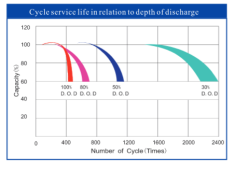i_papp
New Member
- Joined
- Aug 30, 2022
- Messages
- 12
Hi guys,
I have a question regarding the way I use my gel batteries, as they are causing issues after 2 years :-(
I've replaced them twice already, and now I am a bit desperate if should take the same route again.
So I rely on you now
My off-grid system in my weekend house looks like this:
I have the following devices:
Only the alarm system is on when I am not there, and the fridge is on only during summer. So most of the year I am not using the house.
The temperature in the weekend house is between 26 degrees Celsius in the summer, and down to 4 degrees Celsius in the cold winter. But it never goes below 0 degrees.
When the batteries are new, there is no issue, and all of the equipment and devices work as expected. This usually lasts for a year, or a year and a half. After that, sometimes in the evening, the bulbs blink when the pump turns on. Then also when the fridge turns on. And as a final stage, e.g. after 2 years, and usually at night, the inverter shuts off due to low battery voltage when the pump or the fridge turns on.
The batteries went down to 20% after 3 seasons of use. This was measured by a local company I bought them from.
Before I buy a new set of batteries, I wanted to check with you if there is something wrong with my system.
Help, friends!
I have a question regarding the way I use my gel batteries, as they are causing issues after 2 years :-(
I've replaced them twice already, and now I am a bit desperate if should take the same route again.
So I rely on you now
My off-grid system in my weekend house looks like this:
- 3 PV panels of poly 140W, connected in parallel. According to the specification, they are 18V, 7.7A each.
- Epever XTRA3210AN charge controller, 30A, 12V, MPPT. It is configured for GEL batteries, equalization is turned off.
- Sinus 12V inverter of 1000W, with 1500W surge, Nova Tech NV-P1000.
- 2 JYC GE100-12 batteries, connected in parallel.
I have the following devices:
- Alarm system consuming 5W. It is on 24/7. (it is connected to Load terminals of the charger, 12V)
- From May till October, I have the following consumers that are used occasionally
- 9 LED bulbs of 8W each, used only in the evening, and not simultaneously (up to 5 simultaneously)
- 1 fridge of 70W, which runs for 10 minutes every hour, from May till September.
- water pump of 500W, which runs 10-15 times per day when we are in the house. One run is ~30 seconds to fill the water tank. When the pump starts, the surge power is up to 950W according to a meter I installed. After a second or so, it goes back to 500W.
Only the alarm system is on when I am not there, and the fridge is on only during summer. So most of the year I am not using the house.
The temperature in the weekend house is between 26 degrees Celsius in the summer, and down to 4 degrees Celsius in the cold winter. But it never goes below 0 degrees.
When the batteries are new, there is no issue, and all of the equipment and devices work as expected. This usually lasts for a year, or a year and a half. After that, sometimes in the evening, the bulbs blink when the pump turns on. Then also when the fridge turns on. And as a final stage, e.g. after 2 years, and usually at night, the inverter shuts off due to low battery voltage when the pump or the fridge turns on.
The batteries went down to 20% after 3 seasons of use. This was measured by a local company I bought them from.
Before I buy a new set of batteries, I wanted to check with you if there is something wrong with my system.
Help, friends!



